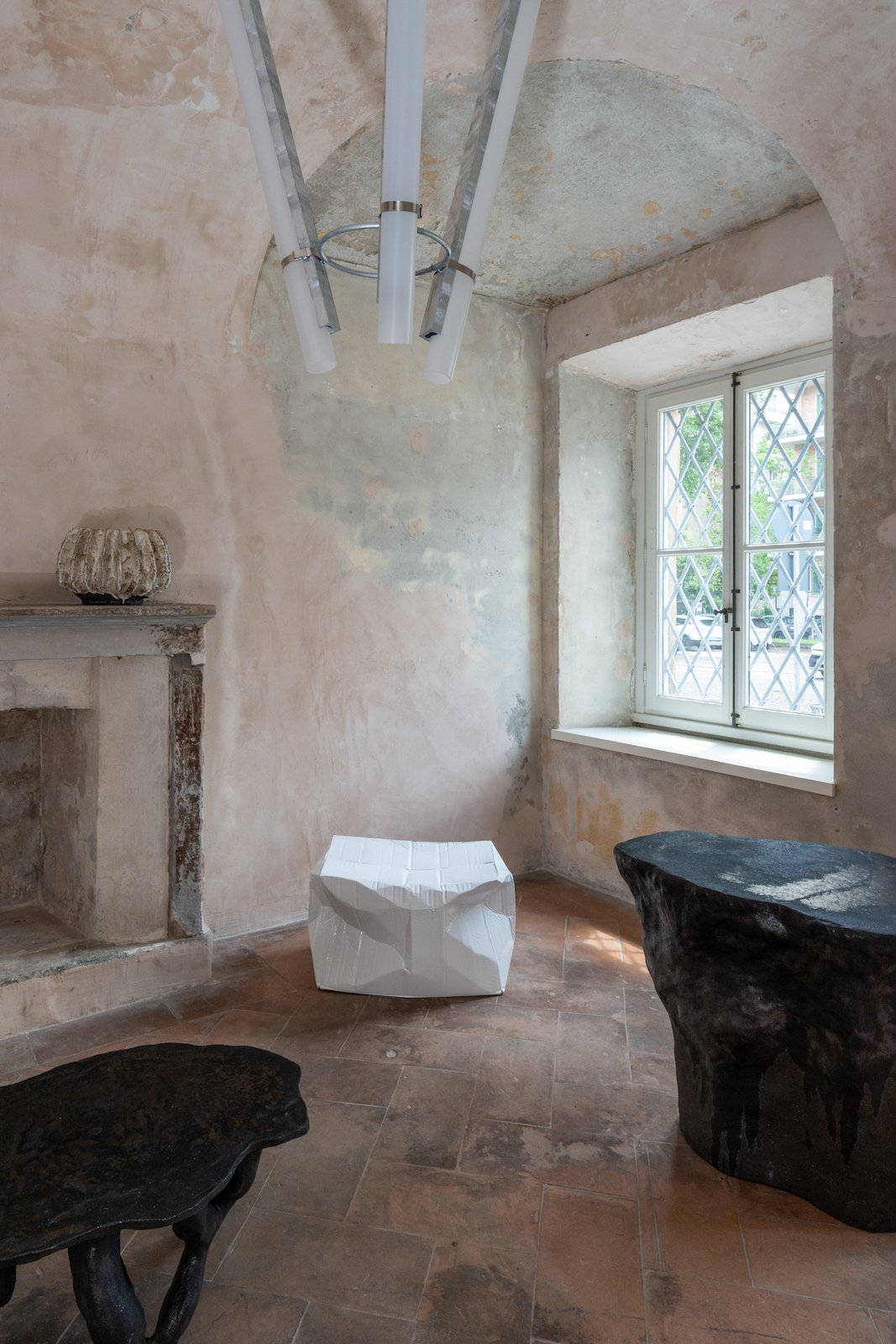stone, ceramics and biomaterials. The works of 39 artists and designers, created with hybrid techniques, trigger a reflection on the concepts of strength and fragility in a new exhibition space
In MAKER 2the second chapter in a series of exhibitions dedicated to the materials that will be displayed in the rooms of the young design gallery Tollbooths 11-12Not everything is as it seems. The tables of the Ukrainian-born artist Ilya Goldman GubinFor example, they look as fragile as the boxes they’re made from, but the addition of resin and fiberglass makes them unsuspectingly strong. The Gummy bear special From HelloIse Colratthree centimeter high sculptures resembling chewing gum and deflated balloons, as well as the Danish designer’s “One Minute Sculptures”. Maria Bang Espersen By pulling and folding the glass onto itself in the very short window of time in which it is malleable, they fool the senses by mimicking the behavior of other materials. The perforated banks of Tejo Remyformerly Droog Design, e Rene VeenhuizenPart of the research the two designers have been doing for over a decade has been recreating the soft look of inflatable boats despite being made of concrete, reinforced with the addition of metal fibers and cast in flexible PVC moulds.
The content will follow
DESIGNERS TO PRESENT AT MAKERS 2
The exhibition includes both of the former Porta Nuova tollbooths, adapting to their very different aesthetics: tollbooth 11, to the left of the gate, has whitewashed walls and a modern appearance, while tollbooth 12 has remained unchanged over the years, with major renovations that have involved the rough, time-worn walls and floors are preserved. The exhibition moves in the area of collector’s design, on the border between sculpture and functional object as well as between high craftsmanship and artistic practice. The focus is on the works of 39 international artists and designers with two things in common: the “do it yourself”, also and above all with the hands, and the use of traditional materials such as glass, ceramics, stone or metal, but treated with experimental techniques that take them in new directions. This self-production based approach has become very popular in recent years, especially among younger people, where definitions of “designer” and “maker” are becoming increasingly intertwined. Sometimes the solutions emerge from empirical research, so to speak lucky coincidenceas is the case with the lamps presented by Gianmarco GuarascioBorn in 1992, the Roman designer, who manipulated copper with an unusual tool, fire, noticed the nuances of color etched on the metal surface by heat and used this technique to create reflectors capable of projecting scenographic plays of light onto walls.

EXPERIMENTING WITH OLD AND NEW MATERIALS
The more traditional materials are flanked by some biomaterials, without which no attempt to describe the state of the art is possible Collectable design could be described as complete. British artist of Brazilian descent Tessa Silva He has decided to turn his gaze to a food that is as everyday as it is symbolic: milk, and to use its proteins to create vases and small refined objects. The mixture of casein and plaster on which his creations are based has ancient roots: a similar process was used in medieval England to make floors, some of which can still be admired today. I study WKND Laboratoryfounded in Seoul by Halin Lee and Eunji Jun, has instead developed a sustainable material based on eggshells.
Julia Marani